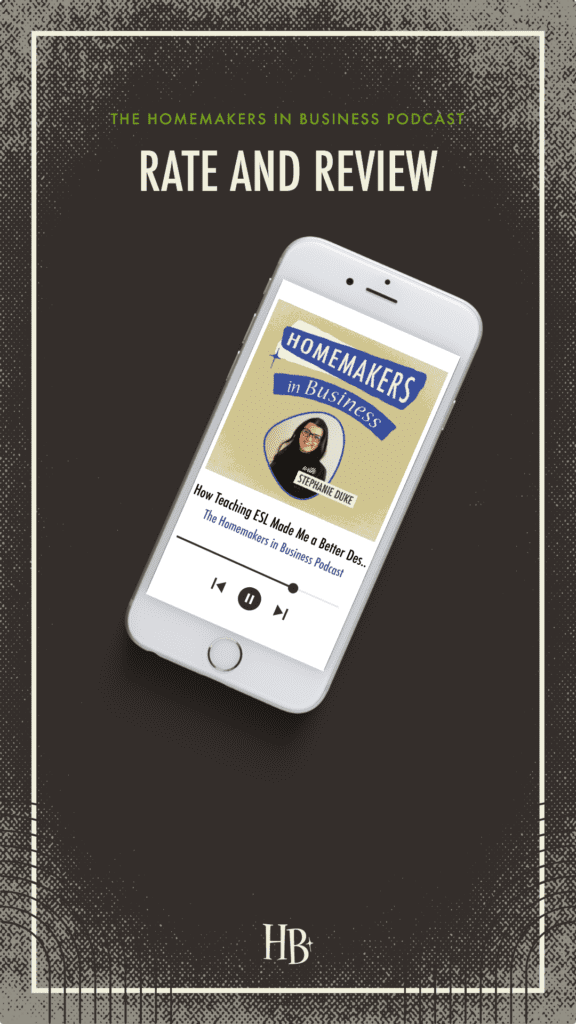How Teaching ESL Made Me a Better Designer
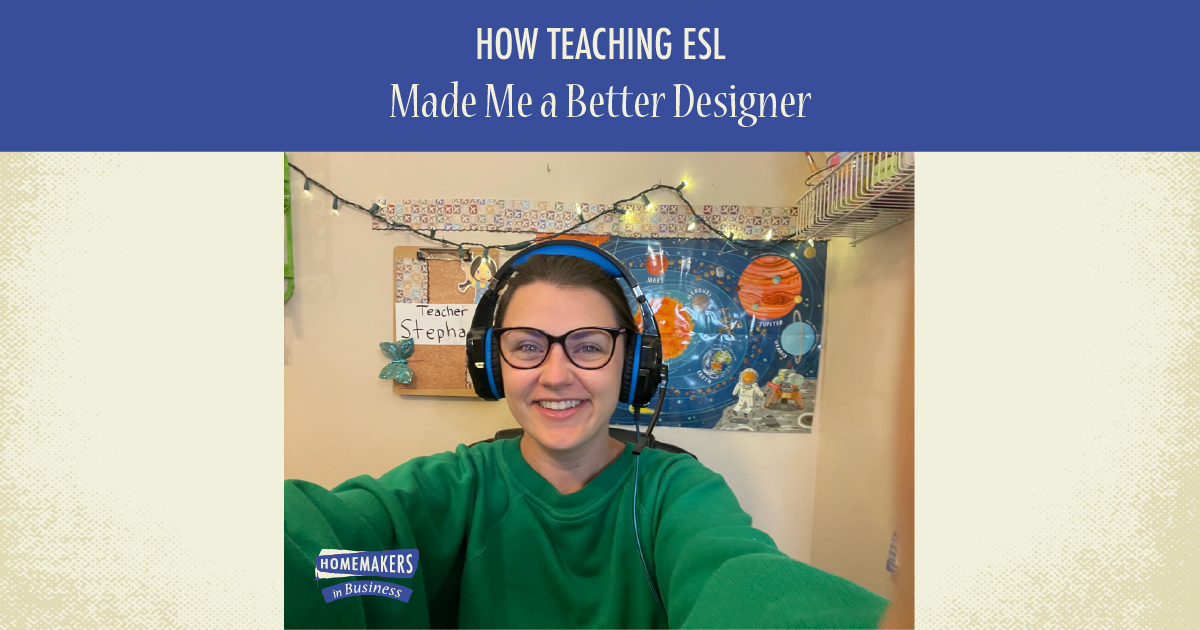
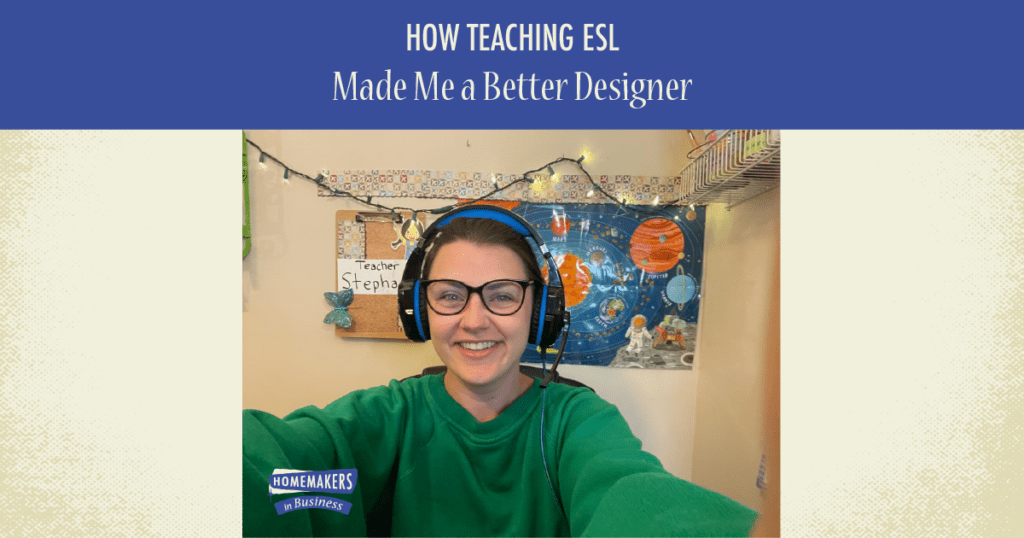
This article is also a podcast episode on Apple, Spotify, and wherever else you get your podcasts!
If you’ve listened to the first episode of this podcast, you already know that I taught ESL for a while. But I haven’t really shared the full story of how that experience shaped my design practice. So, today I’m excited to dive into it with you. I taught for VIPKid, which was primarily a Chinese-based ESL learning platform back in 2020-2021 when I was teaching. This experience brought unique insights and skills to my design practice, teaching me how to communicate with people from diverse backgrounds and so much more, which I’ll explore here in a moment. Plus, teaching ESL majorly improved my time management skills, which have been invaluable to my work as a designer. In this episode, I’ll be sharing how teaching ESL helped me become a better holistic designer and the valuable lessons I learned along the way.
My ESL Story
But before I get into the nitty-gritty, let’s talk about how I even started teaching ESL in the first place. The time was late 2019 and I was working at a print company in Birmingham, Alabama. I was already toying with the idea of starting a design company and dove in headfirst when I saw an ad for Laptop Lifestyle Bootcamp with Amanda Kolbye on Instagram while scrolling during my break. I started that program in January of 2020, ah yeah, can you see where this story is headed yet?! Anyway, I started in January 2020 with the hopes of launching my design business at the end of the 3-month program, in March. Well, we all know what happened in March.
I lost my design job in Birmingham when the pandemic hit so I had all the time in the world to be working on my business with the new skills I just spent 3 months learning, but I also needed to make money. To be fully transparent, I was on unemployment during this time until about August or September of 2020, so I wasn’t fully lacking an income, but I didn’t want to be dependent on that check any longer than absolutely necessary.
I knew one of the other ladies in LLB with me was a full-time ESL teacher and had been traveling the world on that income – at least up to this point anyway. So I started chatting with her about VIPKid, and quickly made the decision to join the company. It was really a no-brainer after I convinced myself I had the ability to be good at the job. I had previously worked 2 remote design internships, so I was excited for the opportunity to work from home again – and get paid this time.
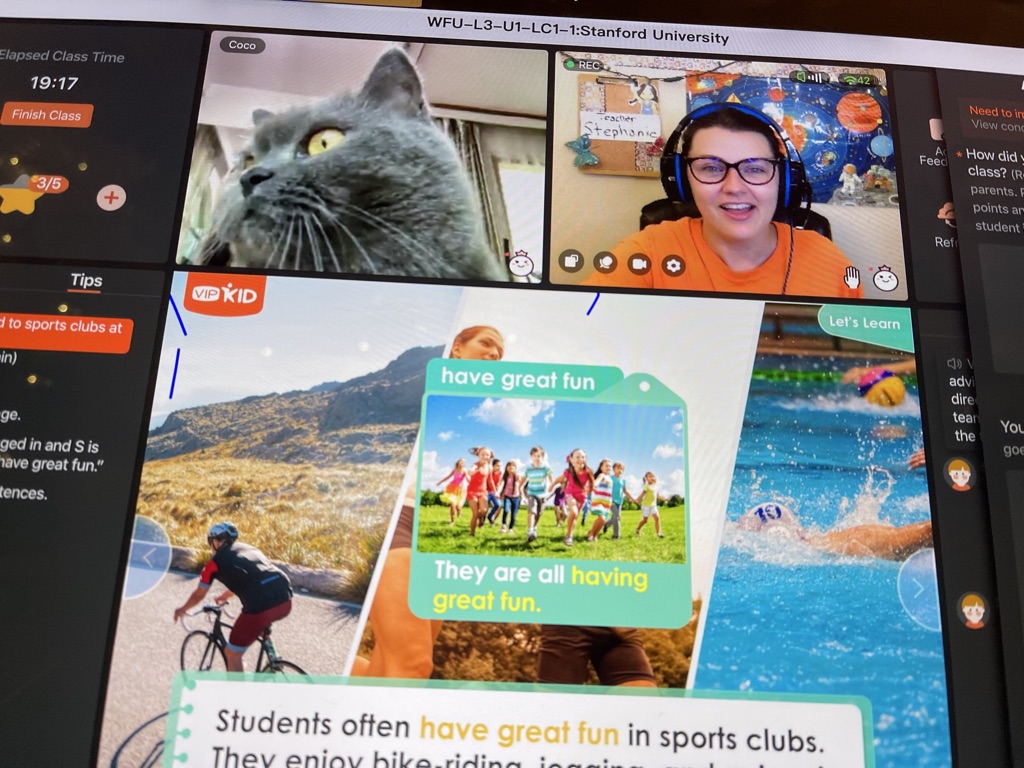
So I was hired in June of 2020, and slowly grew my clientele over the next few months. By the following summer, I was working for VIPKid full-time while working at a local dance studio as the office manager and trying to get my business off the ground. This required staying on top of my schedule like a mad woman because I was teaching students in China, which meant I was working that teaching job from midnight to 8AM Central Time, working at the studio from 2 to 7PM, and fitting my business in wherever I had the energy. And sometimes I slept, ha!
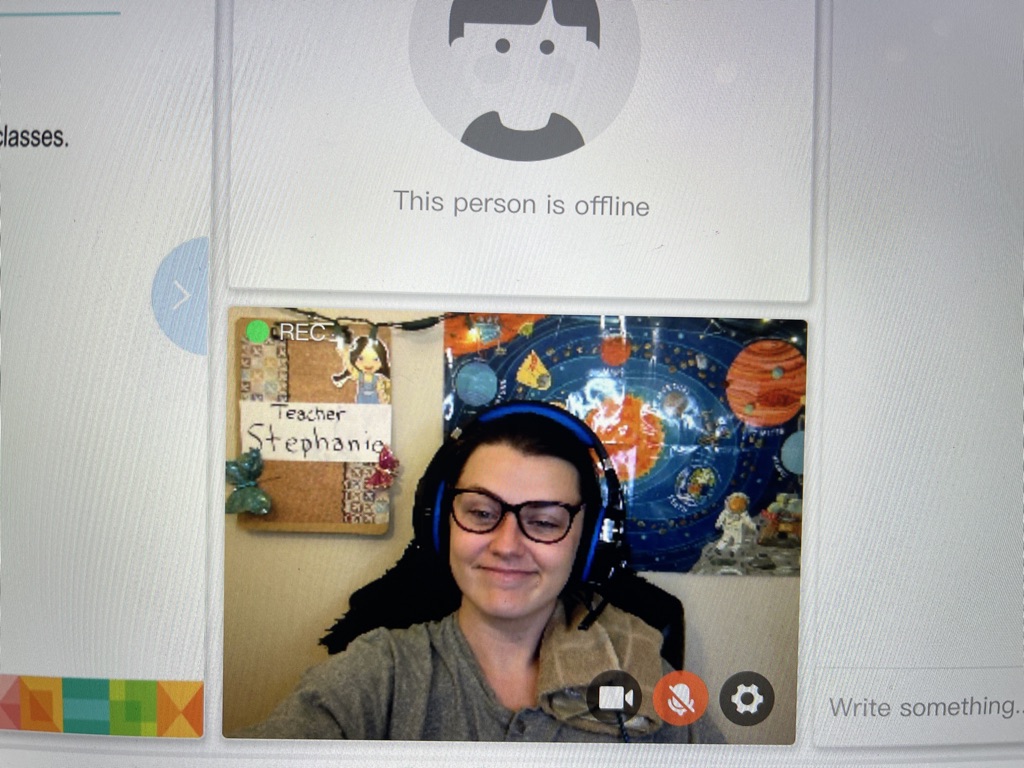
In October of 2021 I lost that teaching job due to some regulation changes in China so I didn’t quite hit a year and a half with VIPKid. But man, I LOVED that job. The hours sucked. But I loved those kids so much. God was very faithful through this time though and allowed me to continue working from home after this job ended, this time through means of my design business. Since November 2021, my full attention has been on growing my business to be my sole means of income.
So that pretty much sums up how I got started teaching ESL, and how that opportunity ended. Now let’s get into some of those juicy lessons learned.
Lessons Learned and Skills Gained
When I first started teaching ESL, I was a nervous wreck. I had not desired to teach since I was probably in Kindergarten, so this was way outside my comfort zone. And to be honest, that’s one of the ways this job grew me. It taught me that I can do hard things and learn new skills. So here are 4 ways teaching ESL made me a better designer:
- It increased my patience and empathy
- It taught me how to communicate more clearly and effectively
- It increased my cultural awareness
- It improved my time management skills
I’ll go over each point more in-depth then talk a little more about how this applies specifically to my role as a brand and website designer.
Point one: It increased my patience and empathy
I think this is a skill that can be gleaned from any type of teaching but especially teaching a foreign language. The kids I was teaching had varying levels of experience with English as a second language. Some older students spoke more fluently than others because they had been learning since they were 3 or 4 years old, while others didn’t start taking lessons until they were 12 or 13 so they required much more practice and patience on my part. Seeing how hard they were trying and how badly they wanted to be able to communicate effectively with me also grew my empathy for them. I understood how difficult and even scary it was for them to be trying something new with a stranger that spoke a different language than them.
One of the best examples I can think of was my sweet regular Yi Fan. He was about 8 years old when I started teaching him and we had lessons together 3 times a week for almost a year. He was very smart, but had trouble grasping new sounds and often confused similar words. He would get very frustrated and discouraged if I had to correct him. But I learned if we took a couple of deep breaths together and made silly faces, he’d cheer up quickly and try again. It was like wiping the slate clean and he could focus again. By the end of our time together we were able to get through his lessons with a couple of minutes to spare to play tik-tac-toe, his favorite game.
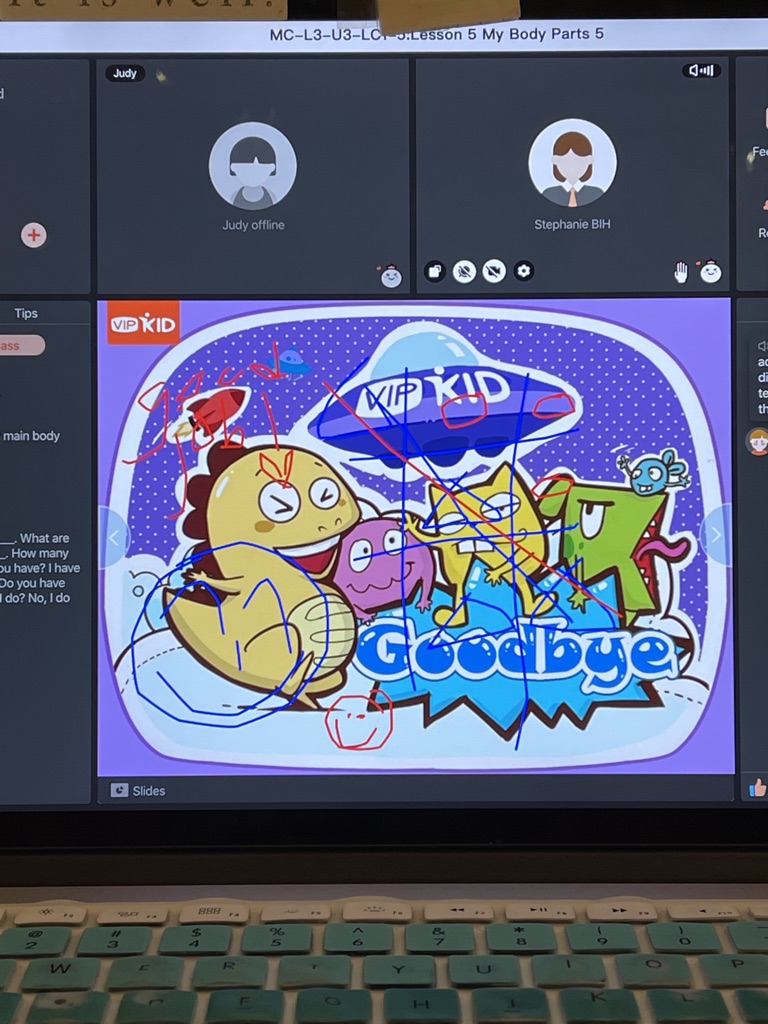
I can only imagine how negatively it would have affected his learning capability if I had gotten frustrated with him instead of being patient and encouraging him to try again. This concept of patience and empathy was a little more difficult to manage with students that had bad attitudes, but still, I persevered and never lost it with them. I may have had to take a couple of extra deep breaths myself with those students, but I got through without them ever seeing me lose my cool.
The whole idea of patience and empathy really bled over into my design practice naturally. It especially comes in handy when working with clients that are new to the design process, and therefore need a little extra care to make sure they feel comfortable and safe working with me. It’s important to me that my clients feel like they can be honest and vulnerable with me because that is one of the keys to creating meaningful designs that are going to have a big impact on their business.
Point two: It taught me how to communicate more clearly and effectively
If you’ve ever taught a child anything, you know how important it is to strip away everything unnecessary and get down to the bones of what it is you’re trying to teach them. Sure, it needs to be fun and engaging, but it’s more important to make your intention clear thereby making it more effective and easy for them to retain.
Teaching ESL really required me to simplify my language. I learned to use simple and concise language, including body language, to explain complex ideas and concepts, which has been incredibly useful in my design work. Now, when I work with clients who have little to no design experience, I am able to explain design concepts in a way that’s easy for them to understand.

This has improved my ability to collaborate with clients and produce designs that truly reflect their vision and mission because I’m able to pull out the answers I need from them to make that a reality. Teaching ESL also taught me the importance of active listening and being patient when communicating with people who may not have the same language proficiency as me. Sometimes there’s a language barrier, and sometimes it’s just a vocabulary barrier. I mean, even native English speakers can have difficulties with terminology in an unfamiliar industry.
I hope this comes across well in this podcast. One of the reasons I started this was to be able to more effectively educate my clients and potential clients. The fast-pace of social media makes it difficult to get into complex conversations so one of my hopes for this podcast is to be a resource for clear, easy-to-understand, and implement advice for home-based business owners.
Point three: It increased my cultural awareness
Prior to teaching, I had limited exposure to Chinese culture and customs. But through my interactions with my students and their families, I was able to gain a deeper understanding and appreciation for their culture that I otherwise wouldn’t have. This experience helped me to approach design with a more global mindset and to consider the cultural context of my clients and their target audience. It also taught me to be more mindful of potential cultural differences when communicating with clients and team members from different backgrounds. This has allowed me to create more effective and inclusive designs that resonate with diverse audiences.
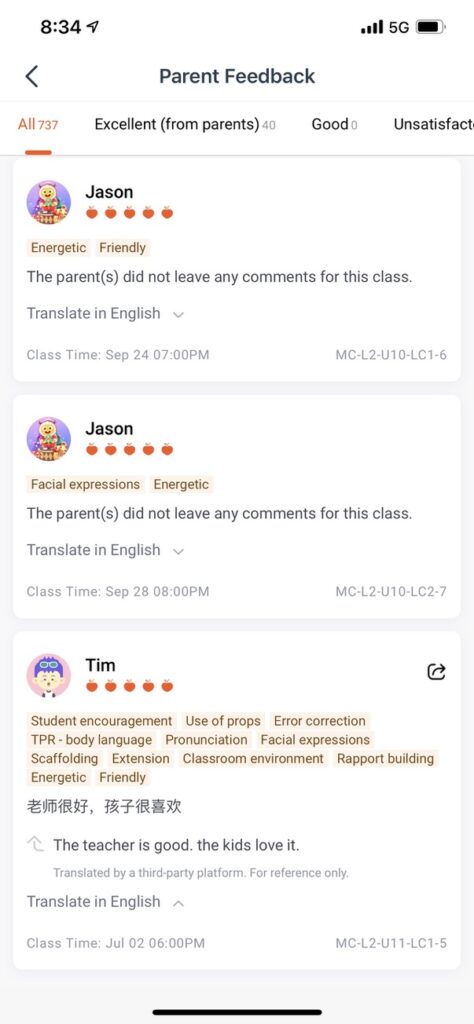
This doesn’t just apply to Chinese culture, but I’m also more aware of the cultural differences even amongst people of the same ethnicity and general demographics. For instance, the culture of someone like myself living in rural Alabama is vastly different from that of someone living in Los Angeles. It’s just a good practice to be mindful of these differences and how they come across in our visual language.
Point four: It improved my time management skills
The episode before this one was all about time management skills as a homemaker in business, but I want to touch on more specifically what I learned in regards to time management while teaching ESL.
Although the lessons themselves were prepared by VIPKid, each child required a lot of preparation and organization on my part. I had to make sure I was fully prepared for each lesson, with all necessary materials and activities planned out in advance to make sure I was teaching that specific child as effectively as possible. This meant I had to become much more intentional with how I spent my time. I had to set aside specific blocks of time each day for lesson planning, teaching, and administrative tasks like grading and feedback.
Not to mention, each lesson was exactly 25 minutes with only 5 minutes in between students. This meant any bathroom breaks, eating, or movement had to happen in those 5 minutes with enough time to get seated and in the next “classroom” before the next 25-minute session started. Not gonna lie, it was super stressful at first – but the more I did it, the more efficient I became.
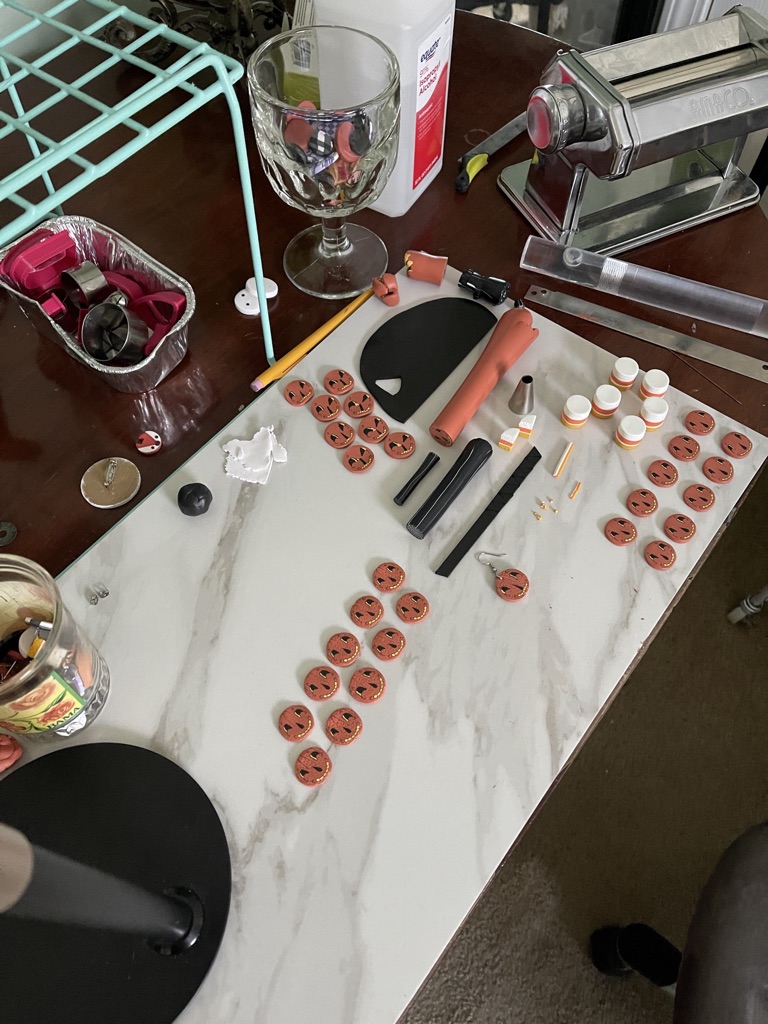
This level of planning and organization naturally spilled over into my design work as well. I found that by being more intentional with my time and planning out my tasks, I was able to work more efficiently and effectively. I was able to better prioritize my client projects, ensuring that I was able to meet deadlines while exceeding expectations. In addition, my increased time management skills allowed me to take on more clients without sacrificing the quality of my work or my personal life balance.
Do I do this perfectly all the time? Absolutely not! Life happens and intentions get squashed, but by being mindful of my time each day I’m better able to rebound from unexpected circumstances.
How It All Translates to My Work as a Designer
Now I want to share some specific examples of how the skills I gained from teaching ESL have translated to my work as a designer. Okay, here they are:
- Improving user experience with design by focusing on simplicity
- Better communication with clients from different cultural backgrounds
- Creating designs that are more inclusive and accessible to a wider audience
Improving user experience with design by focusing on simplicity
On this first point, by simplicity I don’t mean stripping away all personality to just being text and background color. No, I love fun little details that help communicate a client’s story and show off their personality. But one of the most important things I learned while teaching was how to communicate concepts in a way that’s clear. In a way that’s easy to navigate and understand. By focusing on simplicity, I ensure that the user can easily find what they need and not have to work to discard a bunch of unnecessary information. This approach leads to designs that are intuitive and user-friendly.
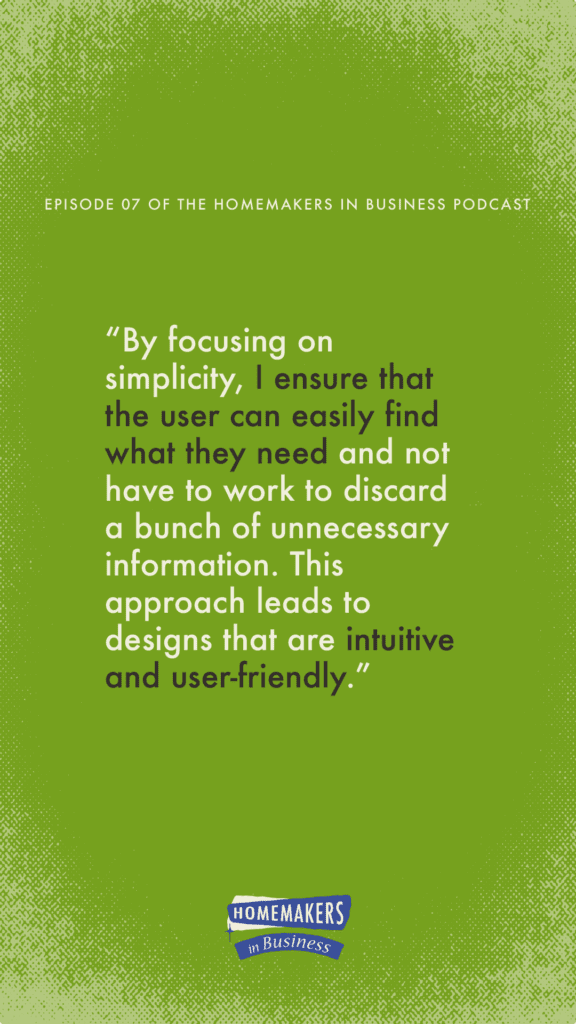
Better communication with clients from different cultural backgrounds and creating designs that are more inclusive and accessible to a wider audience
In terms of communication with clients, my ESL teaching experience has been a really awesome asset. It’s helped me to understand how people with different linguistic backgrounds process information. For example, not all cultures read from left to right. Even if someone now reads and speaks English, this difference affects the way they consume information so it should therefore influence the way I design for that particular audience.
As a designer, this has enabled me to communicate more effectively with clients who may have different communication styles and to take into account their cultural and linguistic differences when creating designs. This has also allowed me to design with a more inclusive and accessible approach, ensuring that the designs I create are accessible to a wider audience.
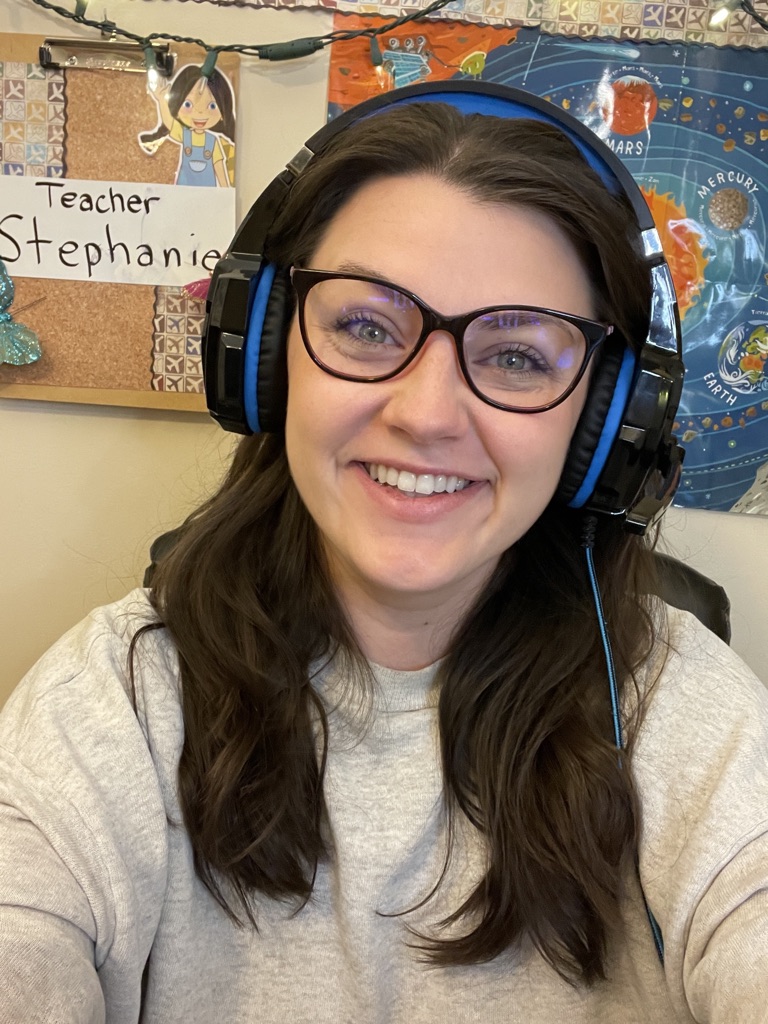
This applies to people with disabilities as well. There are different types of testing I do on my designs to make sure they’re as accessible as possible for those with vision impairments. I don’t believe it’s possible to create designs that are 100% accessible to all people all the time, but I do feel it’s massively important to try to accommodate disabled persons as much as possible.
In Closing
Looking back on my experience teaching ESL and applying those skills to my design work, I can pretty confidently say that it has made me a better designer and communicator. One of the key lessons I learned is the importance of empathy and understanding different perspectives. This means taking the time to listen to my clients’ stories and really understanding their vision and mission, as well as their target audience’s wants and needs. Effective design happens when those two integrate smoothly.
Another valuable lesson is the power of simplicity and clear communication. While teaching, I learned the importance of breaking down complex concepts into simple, digestible pieces. This same principle applies to design. I strive to create visually appealing and easy-to-understand designs that convey my clients’ message clearly.
If you’re a designer listening to this, to become a better designer, I recommend focusing on developing empathy, learning to simplify complex concepts, and valuing diverse perspectives in your work. By doing this, you can create designs that not only look fabulous but also effectively communicate your clients’ message and mission to their ideal audience.
If you’re not a designer, these are still some important skills you can develop that will serve you in your own business, whatever that may be, and in your personal life too.
As I wrap up today’s episode, I hope you’ve gained a better understanding of how my experience teaching ESL has positively impacted my design work. From improving communication skills and cultural awareness to time management, there are many lessons that can be applied to various fields beyond teaching or designing.
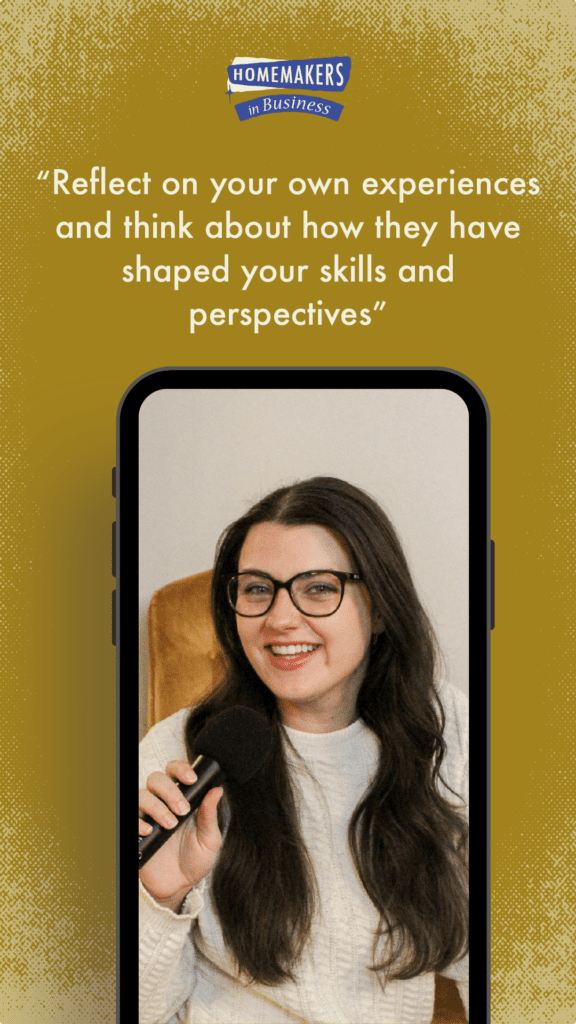
I want to encourage you, dear listener, to reflect on your own experiences and think about how they have shaped your skills and perspectives, whether you’ve taught ESL, volunteered at a local soup kitchen, or pursued a hobby outside of your professional field. These experiences can offer valuable insights and enhance your creative work, so don’t underestimate their potential impact.
I’m Stephanie, but you can call me Steph!
I design brands & websites that get you butterflies-in-your-stomach-excited about your business again.
Simply put, I’m a graphic designer that specializes in brand identity design and Showit website design - arguably the most important aspects of your business! I live in central Alabama with my high school band directing hubby, Thomas, on our modest homestead in the country.
your guide to a stress-free website
FREE Website Planning Tool
- My exact Website Copy Planner Google Doc
- A master doc for keeping track of links and embed codes
- Loads of tips and tricks for planning website content (copy, photos, branding, etc) with ease
